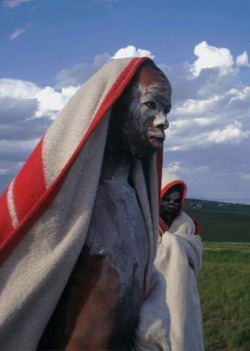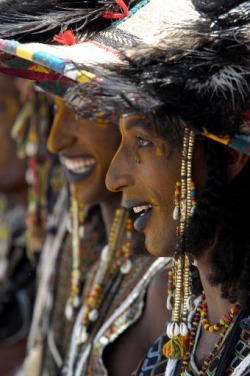Ghana: Indigenous Ethnic Groups

Cara Fahy
World History- Hjelmgren
Period 4
May 4, 2009
Ghana: Indigenous Ethnic Groups
In 1960 approximately 100 cultural groups were recorded in Ghana. Ghana is very different than most countries because of this. These many indigenous sectors are classified in five major groups: the Akan, The Ewe, MoleDagbane, The Guan, and the Ga-Adangbe. These peoples have many differences, but they all have one thing in common; they are Ghanaian and have gone through many things together as a nation (“Ghana: Ethnic Groups and Languages”).
Along with being a person of Ghana, one may be classified furthermore into which of the five groups they belong in, and even farther into the smaller groups classified under the certain fifth in which they belong. “The subdivisions of each group share a common cultural heritage, history, language, and origin” (“Ethnic Groups”). These divisions were mostly driven by competition. Many of the competition between the peoples sprouted from their drive to acquire land for cultivation, to control trade routes, and to form alliances for protection. As well as competitiveness, people are often divided because of their language. Even the Ewe, are divided into the Nkonya, Tafi, Logba, Sontrokofi, Lolobi, and Likpe, simply because of language (“Ethnic Groups”).
For near to 150 years, Ghana was the center of Britain’s slave trade in Africa. Because they were right in the middle of the whole exchange, many of the ethnic groups got swept up into the trade. One of the major ethnic groups of Ghana, the Ashanti people, got involved in the trade. They would sometimes capture people of surrounding regions and sell them to the European slave traders. Currently, Ghana has also made efforts to encourage descendants of enslaved Africans to learn more about their history (“Ghana and The Slave Trade”). They are very interested into which tribes were traded and if they returned to Africa or not.
When it came to the European Colonization, the various ethnic groups stood a very weak people against the great Europeans. Most could barely stand up for themselves in any way, with the exception of the Ashanti people. Ashanti was one of the few African states able to offer serious resistance to the European invaders. Between the years of 1826 and 1896, the Ashanti kings fought four wars against the European people, but in 1900, the Europeans finally defeated the Ashanti people (“Ashanti People”). Their colonization greatly affected all of the Ghanaian ethnic peoples because they lost their feeling of being free, and along with that, much of what they fought for such as land and trade (“Ashanti People”). In essence, the Europeans shot down the indigenous peoples, so they would have to start over and rebuild themselves.
The indigenous groups of Ghana still exist. Although they are still generally peaceful, there still seems to be little disputes here and there. In February of 1994, over 1,000 people were killed and 150,000 others displaced in the northeastern part of Ghana when fighting between four different indigenous groups broke out; Konkomba and Nanumba on one side, against Dagomba and Gonja on the other (“Ethnic Groups”). This fighting was in result of long-lived dispute over land. Even though this fighting was a clear showing that there is ethnic tension still today, many argue that this was just one point, and is not a true showing of their interactions. As a magnificent writer on modern Ghana, has observed; “undifferentiated recourse to ethnic categories has obscured the essential fluidity that lies at the core of shared ties in the country” (Chazan, Naomi). This really shows how the Ghanaians are really together at heart, but by the destruction of this bond by outer forces, such as the Europeans and British, their bond is destructed (“Ethic Groups”). When outsiders disrupt the Ghanaians way of life, or take over parts of their land, the different ethnic groups break their bond and go against each other. The reason that they do is because they are all fighting for the same resources essentially “left over” by the intruders (“Ethic Groups”). Even if people occasionally get into fights or problems, they can easily change that
Annotated Bibliography:
Ghana: Indigenous Ethnic Groups
“Ashanti People” Global Oneness. 4 May. 2009 http://www.experiencefestival.com/a/Ashanti_people/id/1919800
This cite gave me such good information on how the Ashanti people were different than any of the other groups of indigenous people in Ghana because of the was they stood up to the Europeans.
“Ethnic Groups” Home Page: Ghana. 2 May. 2009 http://www.ghanaweb.com/GhanaHomePage/tribes/
This cite was so helpful in my research because it gave me such a good understanding of how the people of Ghana are divided up into their different culture groups, and why they are divided the way that they are.
“Ghana and The Slave Trade” Traces of the Trade. 28 April. 2009
http://www.tracesofthetrade.org/guides-and-materials/historical/Ghana and-the-slave-trade/
This site was really helpful in giving me insight into what happened during the time of the slave trade in Ghana. Before I found this cite, I didn’t understand how the slave trade affected the people of Ghana, and not even the fact that Ghana was such a main player in the slave trade.
“Ghana: Ethnic Groups and Languages” Country Data. 28 April. 2009
http://www.country-data.com/cgi-bin/query/r-5229.html
This website helped me understand the different ways that ethnic groups were divided, and how their different languages played a major role in deciding the different groups people would be in.
last updated on May 22, 2009

